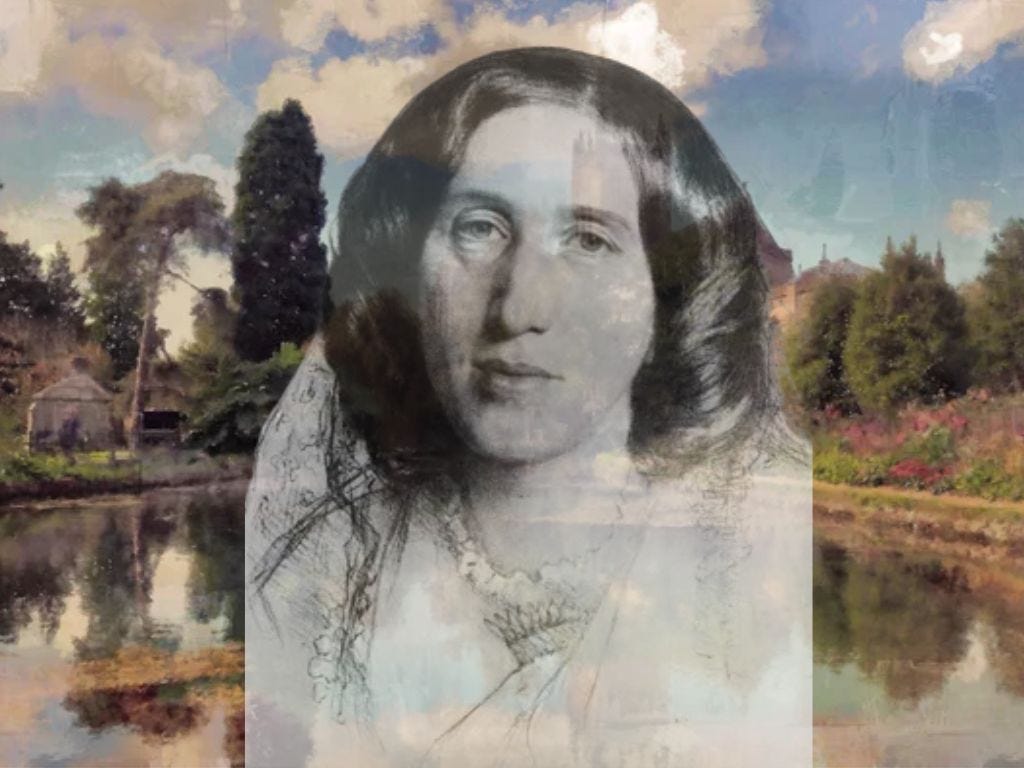Lesson 5: A beginner's guide to George Eliot & MIDDLEMARCH
Yes, George Eliot is a woman. Here's what to know about the surprisingly juicy life of Marian Evans.
In today’s lesson, we’ll cover the biography of Marian Evans, including:
An excessive amount of minor name changes
“Strauss-sickness” and its ability to change lives
The saucy radical bastards of G.H. Lewes
A final lap into Cougar town before she passes
And also, Middlemarch, we’ll talk about the context of Middlemarch
George Eliot is Mary Anne Evans, who changes her name to Marian Evans, then later takes on the nicknames of “Mrs. Lewes” and “Madonna” in her common law marriage. All of this before she ever decides to write a fictional anything that would require a pen name. She dies as Marian Cross.
Virginia Woolf in a 1919 essay on Eliot’s writing brought her books out of the obligatory school curricula where they had withered out. (Hauling the 800-page tome of Middlemarch in my shoulder bag, I think of my classmates who returned, bronzed and fatigued, with the fat, fat Anna Karenina paperbacks, full of summer annotations. My female peers and I lived on the edge of an administrative coup. Middlemarch would have been damned before we cracked the spine to the introduction.) Woolf writes of Eliot,
“Those who fall foul of George Eliot do so, we incline to think, on account of her heroines; and with good reason; for there is no doubt that they bring out the worst of her, lead her into difficult places, make her self-conscious, didactic, and occasionally vulgar. Yet if you could delete the whole sisterhood you would leave a much smaller and a much inferior world, albeit a world of greater artistic perfection and far superior jollity and comfort. In accounting for her failure, in so far as it was a failure, one recollects that she never wrote a story until she was thirty-seven, and that by the time she was thirty-seven she had come to think of herself with a mixture of pain and something like resentment. For long she preferred not to think of herself at all.”
Who is Mary Anne/Marian/George?
Mary Anne grew up with a father who had a home but on his employer’s estate, separating her from the land-owning gentry. She attended Mrs. Wallington’s School at Nuneaton from 1828 to 1832 when she was approximately 8 to 12 years old. She later moved to a Baptist school in Coventry from 1832 to 1835. Both of these schools instilled a religious zeal in young Mary Anne, a fervent Christian devotion.
She returned home to continue her education after her mother died in 1835. Then she removes the “e” from Anne to become Mary Ann.
To my very preliminary research, there is a gap here in the Evans family life. The names of her parents and siblings disappear from her biographies. She had at least one brother. Woolf gives the biggest clue, hinting that Mary Ann’s becoming “a bluestocking,” or a literary and educated woman, disgusted her nameless brother.
This review of Clare Carlisle’s book The Marriage Question about George Eliot’s marriages references siblings, plural.
Though Mary Ann, as Marian in her adult years, turns over the material from her childhood, her family never comes through in the pages of her history, especially compared to her marriages and literary connections she makes in London. If you got the tea, let me know.
So there’s this weird six-year gap, then by 1841, Mary Ann lives with her father in Coventry. There, she meets Charles Bray, who becomes her door to the world outside her small province. He also introduces her to radical ideas that turn her against religion and, consequently, against her father.
Keep reading with a 7-day free trial
Subscribe to self-taught to keep reading this post and get 7 days of free access to the full post archives.



